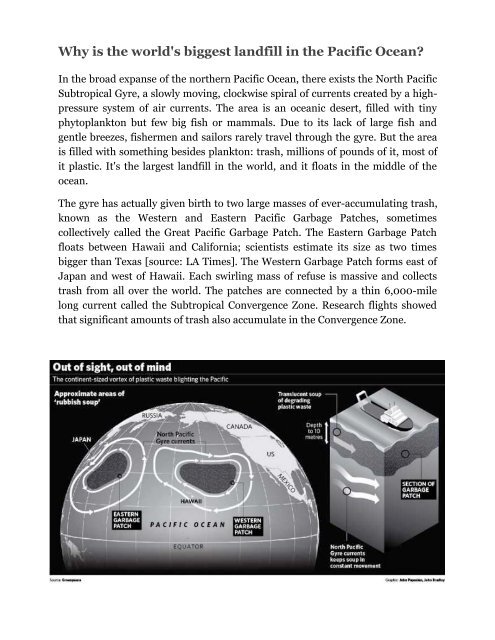The Skriker Actor Packet
The Skriker Actor Packet
The Skriker Actor Packet
You also want an ePaper? Increase the reach of your titles
YUMPU automatically turns print PDFs into web optimized ePapers that Google loves.
Why is the world's biggest landfill in the Pacific Ocean?<br />
In the broad expanse of the northern Pacific Ocean, there exists the North Pacific<br />
Subtropical Gyre, a slowly moving, clockwise spiral of currents created by a highpressure<br />
system of air currents. <strong>The</strong> area is an oceanic desert, filled with tiny<br />
phytoplankton but few big fish or mammals. Due to its lack of large fish and<br />
gentle breezes, fishermen and sailors rarely travel through the gyre. But the area<br />
is filled with something besides plankton: trash, millions of pounds of it, most of<br />
it plastic. It's the largest landfill in the world, and it floats in the middle of the<br />
ocean.<br />
<strong>The</strong> gyre has actually given birth to two large masses of ever-accumulating trash,<br />
known as the Western and Eastern Pacific Garbage Patches, sometimes<br />
collectively called the Great Pacific Garbage Patch. <strong>The</strong> Eastern Garbage Patch<br />
floats between Hawaii and California; scientists estimate its size as two times<br />
bigger than Texas [source: LA Times]. <strong>The</strong> Western Garbage Patch forms east of<br />
Japan and west of Hawaii. Each swirling mass of refuse is massive and collects<br />
trash from all over the world. <strong>The</strong> patches are connected by a thin 6,000-mile<br />
long current called the Subtropical Convergence Zone. Research flights showed<br />
that significant amounts of trash also accumulate in the Convergence Zone.



